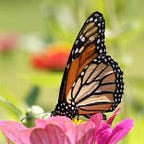Veterinary Pathology With Rebecca Kagan
Dr. Rebecca Kagan is a Veterinary Pathologist who is investigative, patient and has a keen eye for details. Like most veterinarians, she grew up reading James Herriot’s, All Creatures Great and Small books. She loves animals, particularly wildlife and her passion for physiology began in high school. While in college she thought she’d become a vet for cats and dogs, but discovered many things a veterinarian could do she hadn’t yet considered or even been exposed to. Pathology turned out to be her favorite subject and zoo and wildlife pathology was the perfect combination of all things Dr. Rebecca Kagan likes best: the coolest animals, the most interesting diseases, and the most dedicated and awesome colleagues.
Rebecca has a BS in Biology from Susquehanna University in PA and graduated from the Iowa State University veterinary school. Later, she completed an anatomic pathology residency through the University of Illinois Zoological Pathology program, followed by a pathology fellowship at the San Diego Zoo and Wild Animal Park (now called the San Diego Zoo Wildlife Alliance). Rebecca is a board-certified veterinary pathologist, trained to diagnose and treat diseases in both domestic and wild animals. She has been working for the USFWS at the National Forensics Laboratory as a veterinary pathologist since 2010.
Rebecca helps the USFWS law enforcement team in their investigations by determining cause of death in suspected illegal wildlife killings, collecting any trace evidence for additional analysis (such as bullet fragment or poison samples) and serving as a fact witness in court. She loves mysteries and each body they get is like a little mystery — this is her favorite part of being a pathologist! Sometimes what looks like a gunshot wound in the field turns out to be a gunshot wound. But sometimes it’s a surprise. An eagle found dead at the base of a power pole may have been electrocuted. Or she may have had a disease, or been attacked by another eagle, or been shot, or hit by a car, or something else entirely. Rebecca tries to sort that out using autopsy, x-rays, microscopic examination, toxicology testing, or whatever else they may need. In cases of disease, the USGS National Wildlife Health Center can help them out with diagnostic testing. In poisoning cases, the Michigan State University Veterinary Diagnostic Lab has been a tremendous help.
“A recently published article, ‘Lead Exposure is Unrelated to Wind Turbine Mortality in Golden Eagles’, looked at whether lead toxicosis plays a role in avian wind turbine collisions. The authors write, ‘Lead toxicosis, which is well established as an important contributor to mortalities in bald and golden eagles (Haliaeetus leucocephalus and Aquila chrysaetos, respectively), California condors (Gymnogyps californianus), and a variety of waterfowl. Rotating wind turbine blades have caused the death of many bird species, including bald and golden eagles, when flight paths intersect wind farms. We conducted an analysis of the relationship between liver lead concentrations and mortality from collisions with wind-turbine blades (WT) in golden eagles submitted to the National Fish and Wildlife Forensic Laboratory.”
Rebecca explains, “It is a team effort. Because these animals are often part of vulnerable or endangered populations it’s important to keep an eye on all types of mortality, even if it’s not due to illegal activity.”
Unfortunately, because there is often no known history with wildlife and because the bodies may be decomposed or scavenged by the time they are found, sometime the cause of death can never be determined. That’s part of the challenge. Preservation of wildlife populations is extremely important. Not only because wildlife is integral to environmental health and sustainability, but because their existence makes our lives whole. Rebecca believes, “We have no future without them.”
Rebecca is primarily a diagnostician, and her projects are generated “in the moment” to answer case-related questions. She explains by saying, “Veterinary forensic pathology is still a relatively new discipline. Anything that we can do to advance the field benefits future generations of pathologists, veterinarians, wildlife biologists, and investigators.” At the moment, Rebecca is excited to be part of a forensic veterinarians team, establishing standards for live animal and autopsy investigation and setting up a pathway for veterinary pathologists to receive specialty training in forensic pathology. She is a firm believer in “better together”, and thinks it’s imperative to involve established professionals and trainees from around the world to generate and access the highest quality research and experience.
Some research projects Rebecca has been involved with at the USFWS include on-going investigation of avian decomposition patterns using a body farm she’s set up at the Lab, findings associated with avian electrocution, trap trauma, and lead and anticoagulant rodenticide levels in eagles killed by wind turbines. They frequently host veterinary students interested in wildlife pathology and she tries to get them involved in projects as much as possible.
To learn more about Dr. Rebecca Kagan’s research in forensics and veterinary pathology, check out her recently published chapter titled, Veterinary Pathology Forensic Standards, in the Journal of Forensic Sciences. For more on her work view her list of published documents, discoverable via USFWS Conservation Library. #FWSscholar is brought to you by the USFWS Conservation Library, #WeAreUSFWS.
